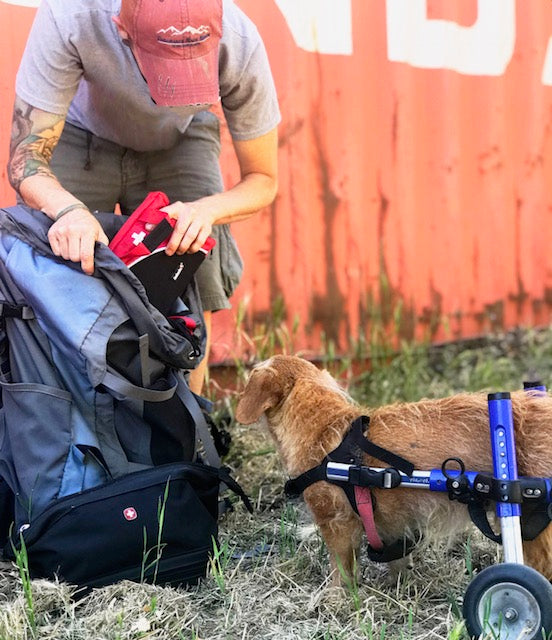
Basic Animal First Aid Kit Checklist
Basic Animal First Aid Kit Checklist
Alright, let’s cut to the chase. There really isn’t one size fits all first aid kit for you and your pets. There are a couple commercial fist aid kits that you can purchase online that range in extremely basic to somewhat comprehensive but even then, you’ll need to personalize the kit for each one of your pets as well as the type of traveling you’ll be doing. If you already have an animal first aid kit in your pack, super! You’re ahead of the pack.
If you don’t, than you can use this downloadable checklist to build one from scratch.
For those of you already wielding a kit, use this checklist to compare your ingredients and add what you’re missing.
Lots of human fist aid items transfer over to the animal world very easily such as bandaging, wound wash, trauma shears, thermometer, etc…basically the hard goods and just a few of the over the counter meds. But, what those commercial kits won’t include are the items specific to your fur kid such as their prescription meds and a few other things that will make life a lot easier if you’ve got a pet in crisis in the back country or on the road.
While this list looks like it would fill a duffel bag, these items all pack down pretty small and they’re all light weight. Don’t let the size of the list fool you. Let’s dive in. Don't forget, here's the downloadable pdf version of this checklist so you can print it off when you're ready to make yours.
-
Muzzle
-
Collapsible bowl
-
Slip leash (and harness in the event of a neck injury)
-
Inflatable E-Collar (sized appropriately for your dog(s) or cat(s)
-
Digital RectalThermometer
-
Vaseline (for lubricating thermometer)
-
Rubbing Alcohol to clean the thermometer
-
Trauma/Bandage Shears (blunt tipped)
-
Sterile Saline (can be used to flush wounds and eyes)
-
Needle Nose Tweezers
-
Needle Nose Pliers
-
Nail Clippers
-
Syringe
-
Expired Credit Card or something similar (for scraping away stingers)
-
Styptic Pencil
-
Pen Light or small flashlight
-
Glucose Paste or Honey Packets (for treating shock)
-
Wallet Magnifier
-
Tick Key
-
Hydrogen Peroxide (travel size; to induce vomiting)
-
Musher’s Secret (for paw protection)
-
Wire Mesh Splint
-
Instant Ice Packs (3-4)
-
Hot packs
-
Emergency Blanket
-
Vet wrap
-
Non-Stick Sterile Telfa Bandages of varying sizes
-
Triangular Bandage
-
Gauze Rolls
-
Gauze Tape
-
Triple Antibiotic Ointment
-
Ear Cleaning Solution
-
Benadryl (consult your veterinarian for proper dosage for your dog(s) or cat(s)
-
Antiseptic Wipes
-
Rubbing Alcohol
-
Non-latex disposable gloves
Other things that are critical:
-
Your dog(s) and cat(s) prescription meds
-
An animal first aid guide book
-
Phone number for your veterinarian
-
ASPCA Poison Control Center 1-800-426-4435
-
Copy Vaccination Records (put in waterproof plastic bag)
-
Phone number of the nearest 24 hours veterinary hospital (especially if you’re traveling)
I recommend organizing your kit in a way that you can quickly grab what you need without having to search through it all in an emergency.
For example, I have all of my tools such as tweezers, scissors, pliers, nail clippers, tick key, and magnifier, and syringe in one small zippered pouch labeled “Tools”.
Another zip lock bag labeled “Bandages” contains all of the bandaging, tape, and vet wrap.
In yet another bag, I have all of the meds. You get the picture.
Organize your kit in whatever way makes sense to you so that when an emergency comes us, you’re not wasting precious time trying to find what you need.
If you have any questions or you have some of your own tips to share, leave them in the comments below!
Happy Hiking!!
